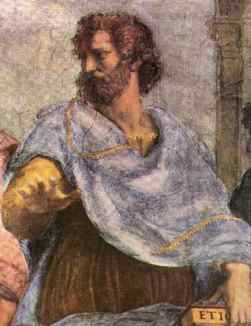It's actually something called Electronic Configuration.
Today, you're going to learn how to write "chemists' gibberish".
Looking forward to it?
What is electronic configuration?
-description of an atom's orbitals & how many electrons occupy each orbital
-helps to group & learn about the elements of the periodic table
recall: Niels Bohr suggested that electrons occur only in particular energy states - when an electron emits/absorbs a particular amount of energy, it will instantly jump to a different orbital
important terms to know:
-energy level: amount of energy that an electron is able to have
'n' is the # of the energy level
-for a given value of 'n', different types of orbitals are possible
n=1 only s-type is possible
n=2 s- & p-types are possible
n=3 s-, p-, d-types are possible
n=4 s-, p-, d-, f-types are possible
-quantum: the difference of energy of 2 specific energy levels
-ground state: when all the atom's electrons are in the lowest possible state (ie. stable, like a noble gas)
-excited state: when all the atom's electrons are temporarily occupying an energy state greater than its ground state
ex. When an electron takes in extra energy, like a photon, or hits a neighbouring particle, it becomes excited.
-orbital: the actual area of space that an electron occupies in a specific energy level
-4 types: s, p, d, & f
-energy levels are not spaced apart evenly
-each orbital is symbolized by a circle
-shell: group of all orbitals with the same n-value
ex. 3rd shell: 3s, 3p, 3d orbitals
-sub-shell: group of orbitals with the same type
ex. group of 5 3d-orbitals of the 3d shell
Type of subshell | # of orbitals | Max. # of electrons |
s-type | 1 s-orbital | 2 |
p-type | 3 p-orbitals | 6 |
d-type | 5 d-orbitals | 10 |
f-type | 7 f-orbitals | 14 |

Writing Electronic Configurations for Atoms
Neutral atoms:
-always begin using the LOWEST energy
-determine the # of electrons (recall: in a neutral atom, the atomic # is the # of electrons), then start at 1s, continuing to add until there are no more electrons
-each electron has an opposite spin classified by up & down arrows
potassium: 19 electrons
***NOTE: FOR EACH ORBITAL, DRAW ALL THE UP ARROWS FIRST FROM LEFT TO RIGHT BEFORE PAIRING THEM WITH THE DOWN ARROWS!!!***
Ions:
-negative ions: add electrons (equal to the charge) to the final unfilled subshell, starting from where the neutral atom left off
-positive ions: start with the neutral configuration & take away electrons from the OUTERMOST shell first
Exceptions
Why are you so surprised?! There are always exceptions!!
Cr (Chromium gains stability with a HALF-FULL d-subshell)
we would predict: 1s2 2s2 2p6 3s2 3p6 4s2 3d4
but it is actually -->1s2 2s2 2p6 3s2 3p6 4s13d5
Cu (Copper gains stability with a FULL d-subshell)
we would predict: 1s2 2s2 2p6 3s2 3p6 4s2 3d9
but it is actually -->1s2 2s2 2p6 3s2 3p6 4s1 3d10
Core Notation
-special type of electron configuration: core electrons are replaced by the nearest noble gas
-usually take part in chemical reactions
-outer electrons: outside of the core electrons (ie. the noble gas)
How to write core notation
1. locate the atom & the nearest noble gas at the end of the period ABOVE the element (it is crucial to use the noble gas in the PREVIOUS row!!!)
2. replace the first part of the electron configuration (core) with the matching noble gas with the noble gas' symbol in square brackets
Carbon (6 electrons):
electron configuration: 1s2 2s2 2p2 <-- replace 1s2 with [He]
core notation: [He]2s22p2
a joke to end it off, as usual:

